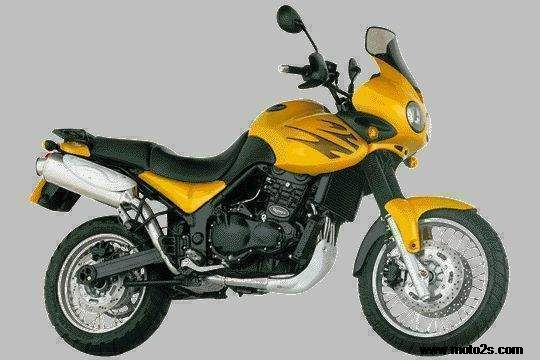Triumph Tiger 900
The Tiger is a supremely versatile bike whose rugged looks, torquey powerplant, long-travel suspension and thoughtful ergonomics blend to give performance, practicality and touring comfort. A popular enduro-styled all-rounder, the Tiger has been updated this year with a new 955cc three-cylinder engine producing 105PS (104bhp) - making it the most powerful machine in its class. This new fuel-injected, 12-valve engine is the first of a new, third generation of Triumph’s three-cylinder unit (the first being the carbureted engine introduced in the early ‘90’s, and the second being the fuel-injected triple engine launched on the Daytona and Speed Triple in 1996). The starter sprag clutch and alternator have been moved to the end of the crankshaft resulting in a reduction in weight and improved engine refinement, with less mechanical noise especially at idle, whilst the gearchange selector mechanism has been redesigned to give a smoother, more positive action. In addition the new engine features high-pressure die-cast (HPDC) crankcases, which facilitates improved consistency of manufacture and casting accuracy. The Tiger motor's prodigious midrange torque output, rising to a peak of 97N.m (72ft.lb) at 6200rpm, is very much a characteristic of the triple, as is its smoothness throughout the rev range. With its enduro-style chassis giving a roomy, upright riding position, the Tiger provides excellent visibility, enhancing rider safety as well as allowing maximum enjoyment of the view. The seat can be adjusted to suit a range of rider heights. Chassis design combines a purpose-designed steel perimeter frame with high quality, long travel suspension. Both the front forks and rear monoshock have been designed primarily for road riding, and cope superbly with a wide variety of surfaces. The suspension and rigid frame combine with well-chosen geometry to make the Tiger agile and enjoyable through the most demanding corners, yet ensure stability at speed and when heavily loaded. Twin front and single rear disc brakes with twin-piston calipers provide reassuring and controllable stopping power. Featuring new, more aggressive graphics, the bike retains the distinctive twin-headlamp look for which the Tiger has become known. The bike's excellent night-time visibility is matched by the efficiency with which the frame-mounted fairing shields the rider from wind with minimal turbulence. Clever fuel tank design allows a large 24 liter (5.3 gal) capacity, facilitating long distances between refills, while keeping weight well forward for optimum balance and allowing the rear of the tank to be kept slim. The Tiger's roomy dual-seat also enhances the bike's long-distance ability, helping make it an ideal companion for touring with or without a pillion. That is especially true when the bike is fitted with Triumph's optional panniers, which were purpose designed as an integral part of the machine.
|
1999年Triumph Tiger 900
2013/7/30 8:04:00





